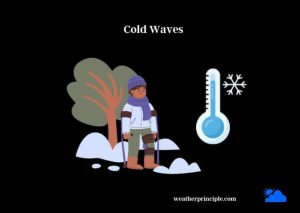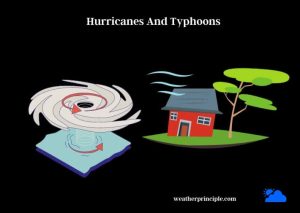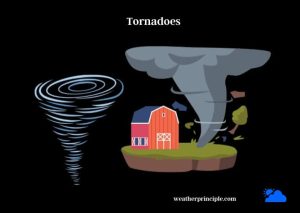Published on: May 4, 2023
Written by Shaown Khan / Fact-checked by Kader Khan
Droughts are prolonged periods of abnormal dryness that negatively impact the natural environment and human activities. Characterized by a lack of precipitation, droughts can vary in intensity, duration, and geographical extent. In this article, we will explore the various types and causes of droughts, their consequences, and possible mitigation strategies.
Droughts can be broadly categorized into four types: meteorological, hydrological, agricultural, and socioeconomic. Each type is distinguished by its unique impact on the environment, water resources, and human well-being.
This comprehensive article aims to provide an in-depth understanding of droughts, their causes, and impacts, as well as explore current and future challenges related to drought management and resilience. The ultimate goal is to create awareness and foster informed decision-making for a more sustainable and drought-resilient world.
Causes of Droughts
Climate variability
Natural climate variability is a major cause of droughts. Fluctuations in global climate patterns, such as changes in ocean temperatures and atmospheric pressure, can lead to altered precipitation levels and prolonged dry spells.
El Niño and La Niña
El Niño and La Niña are examples of climate phenomena that influence drought occurrence. El Niño is associated with warmer ocean temperatures in the equatorial Pacific, often resulting in droughts in Asia and Australia, while La Niña brings cooler temperatures and increased rainfall in these regions.
Human-induced factors
Human activities, such as deforestation, agricultural practices, and urbanization, can exacerbate drought conditions by altering local and regional climate patterns and reducing the ability of ecosystems to retain water.
Land use and deforestation
Land-use changes, particularly deforestation and agricultural expansion, can increase the risk of droughts. Deforestation reduces the capacity of forests to store water and regulate local climates, while agricultural practices can deplete soil moisture and contribute to land degradation.
Meteorological Droughts
Precipitation patterns
Meteorological droughts occur when an area experiences a prolonged period of below-average precipitation. These droughts are typically identified by comparing current precipitation levels to historical averages over a specified time frame.
Temperature and evaporation rates
Higher temperatures can exacerbate meteorological droughts by increasing evaporation rates, further reducing available moisture and increasing the demand for water in the environment.
Severity and duration
Meteorological droughts can vary in severity and duration, from short-term dry spells lasting a few weeks to prolonged periods of deficient precipitation that persist for years.
Hydrological Droughts
Surface water and groundwater levels
Hydrological droughts are characterized by decreased levels of surface water and groundwater, impacting water supplies for human consumption, agriculture, and the environment. These droughts often result from prolonged meteorological droughts, as reduced precipitation limits the replenishment of water resources.
Impact on water supply and ecosystems
Hydrological droughts can have significant consequences for water supply systems, leading to water restrictions, reduced hydropower generation, and negative effects on aquatic ecosystems and wildlife.
Indicators and measurement methods
Hydrological droughts are typically assessed using indicators such as streamflow, reservoir levels, and groundwater measurements to determine the severity and extent of water resource depletion.
Agricultural Droughts
Soil moisture levels
Agricultural droughts occur when soil moisture levels are insufficient to meet the water requirements of crops and other vegetation. This type of drought can lead to reduced crop yields, stunted growth, and increased susceptibility to pests and diseases.
Crop yield and productivity
Agricultural droughts directly impact crop yield and productivity, leading to food shortages and increased food prices. In severe cases, these droughts can result in widespread crop failure and famine.
Effects on livestock and food security
In addition to crop losses, agricultural droughts can also affect livestock by reducing the availability of water and forage. This can lead to reduced animal productivity, increased mortality rates, and threats to food security.
Socioeconomic Droughts
Impacts on human populations
Socioeconomic droughts arise when the demand for water resources exceeds the available supply due to meteorological, hydrological, or agricultural droughts. These droughts can have far-reaching consequences on human populations, including water scarcity, job losses, and forced migration.
Economic repercussions
Socioeconomic droughts can result in significant economic losses due to decreased agricultural productivity, reduced industrial output, and increased spending on drought relief and recovery efforts.
Social and psychological effects
Droughts can also have social and psychological impacts on affected communities, leading to increased stress, anxiety, and depression, as well as heightened conflicts over scarce resources.
Drought Monitoring and Early Warning Systems
Satellite and ground-based observations
Drought monitoring and early warning systems rely on satellite and ground-based observations to track precipitation, temperature, soil moisture, and other relevant variables. These data are then used to assess drought conditions and predict future events.
Drought indices and classification
Various drought indices have been developed to classify and quantify drought severity, such as the Palmer Drought Severity Index (PDSI) and the Standardized Precipitation Index (SPI). These indices help scientists, policymakers, and communities better understand and respond to drought conditions.
Advances in prediction and forecasting
Improvements in climate modeling and forecasting techniques have enhanced our ability to predict drought occurrence and severity, allowing for more effective planning and response strategies.
Drought Resilience and Adaptation Strategies
Water conservation and management
Implementing effective water conservation and management practices is essential for building drought resilience. This can include measures such as reducing water waste, recycling wastewater, and promoting the use of water-efficient appliances and technologies.
Sustainable agricultural practices
Adopting sustainable agricultural practices, such as crop diversification, efficient irrigation systems, and soil conservation techniques, can help increase the resilience of agricultural systems to droughts.
Infrastructure and technology solutions
Investments in infrastructure and technology, such as rainwater harvesting systems, desalination plants, and drought-resistant crops, can help improve water availability and reduce the impacts of droughts.
Drought Mitigation and Response
Government policies and frameworks
Governments play a crucial role in drought mitigation and response by developing and implementing policies and frameworks that promote sustainable water management, drought preparedness, and emergency response.
International collaboration and aid
International collaboration and aid are essential for addressing the global challenges posed by droughts. This can include sharing knowledge, resources, and technologies, as well as providing financial assistance to countries in need.
Community-based initiatives
Community-based initiatives, such as local water conservation campaigns and education programs, can play a vital role in raising awareness and promoting drought resilience at the grassroots level.
The Future of Droughts
Climate change projections
Climate change is expected to increase the frequency, severity, and duration of droughts in many regions around the world, posing significant challenges for water security and ecosystem health.
Potential impacts on global water security
As climate change exacerbates drought conditions, global water security is likely to be increasingly threatened. This may result in increased competition for scarce water resources, heightened geopolitical tensions, and greater challenges in meeting the water needs of growing populations.
Emerging challenges and opportunities
The increasing threat of droughts underlines the need for innovative solutions and approaches to water management, agriculture, and infrastructure. As new challenges emerge, so too do opportunities for scientific research, technological advancement, and international cooperation in building a more drought-resilient future.
Case Studies
The Dust Bowl of the 1930s
The Dust Bowl was a severe environmental disaster that affected the Great Plains of the United States during the 1930s. A combination of drought, poor agricultural practices, and economic depression led to widespread soil erosion, crop failure, and human suffering.
The California Drought (2011-2017)
The California drought was a prolonged period of below-average precipitation that led to severe water shortages, agricultural losses, and ecological impacts. The drought prompted widespread water restrictions, investments in water conservation technologies, and a renewed focus on sustainable water management in the state.
The Australian Millennium Drought (1997-2009)
The Millennium Drought was the worst drought to affect Australia in over a century. The drought had significant impacts on agriculture, water resources, and the environment, leading to policy reforms and investments in drought resilience and adaptation strategies.
Conclusion
Recap of key points
Droughts are complex natural phenomena with far-reaching consequences for the environment, water resources, and human well-being. Understanding the various types and causes of droughts, their impacts, and effective mitigation strategies is essential for building a more sustainable and drought-resilient world.
The importance of understanding droughts
Increased awareness and understanding of droughts are crucial for informed decision-making at all levels, from individual households to governments and international organizations. By grasping the complexities of droughts, we can better plan for and respond to their challenges.
Moving forward: building a drought-resilient world
Addressing the global challenges posed by droughts requires a concerted effort from governments, communities, and individuals. By investing in research, technology, infrastructure, and policy reform, we can work together to build a more sustainable and drought-resilient future.
FAQs
What is the difference between drought and water scarcity?
Drought is a natural phenomenon characterized by a prolonged period of below-average precipitation, while water scarcity refers to a situation in which the available water resources are insufficient to meet the demands of human and environmental needs.
How are droughts predicted and monitored?
Droughts are predicted and monitored using a combination of satellite and ground-based observations, climate models, and drought indices. These tools help scientists assess current drought conditions and forecast future events.
How can we improve water conservation and management during droughts?
Water conservation and management can be improved through measures such as reducing water waste, recycling wastewater, implementing efficient irrigation systems, and promoting the use of water-efficient appliances and technologies.
What role does climate change play in drought frequency and severity?
Climate change is expected to increase the frequency, severity, and duration of droughts in many regions around the world due to changes in precipitation patterns, temperature, and evaporation rates.
How can individuals and communities prepare for and mitigate the effects of droughts?
Individuals and communities can prepare for and mitigate the effects of droughts by adopting water conservation practices, investing in drought-resilient infrastructure and technologies, and supporting policies that promote sustainable water management and drought preparedness.
Relevant Resources:



